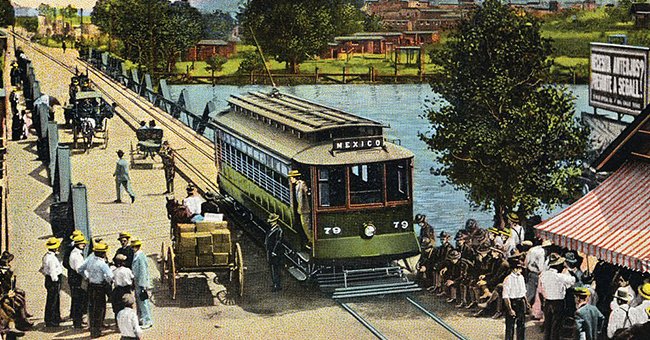
The Story behind the Unbelievable Way to Reach Mexico from El Paso
It isn’t all that uncommon to have public transportation going through international borders (the metro system connecting Hong Kong and Shenzhen, for one). However, with the current situation, it is hard to imagine that it was once possible to cross the border … in a streetcar. But that was exactly the case.
Imagine living in El Paso back in the 1950s—you just got off work and a thought struck you … what about a short trip to Mexico? Maybe you could go down south to grab yourself a pint of Tesguino to quench that thirst, maybe even bring some authentic Queso Chihuahua back for your next casserole … just a small evening trip across the border.
Wait, your car just broke down again? That’s a bummer.
But no worries, you knew that you could simply hop on a streetcar and head to Ciudad Juárez. In maybe 20 minutes you'd reach the bridge, and there you are—the refreshing scent of Mexico, right across the Rio Grande river.
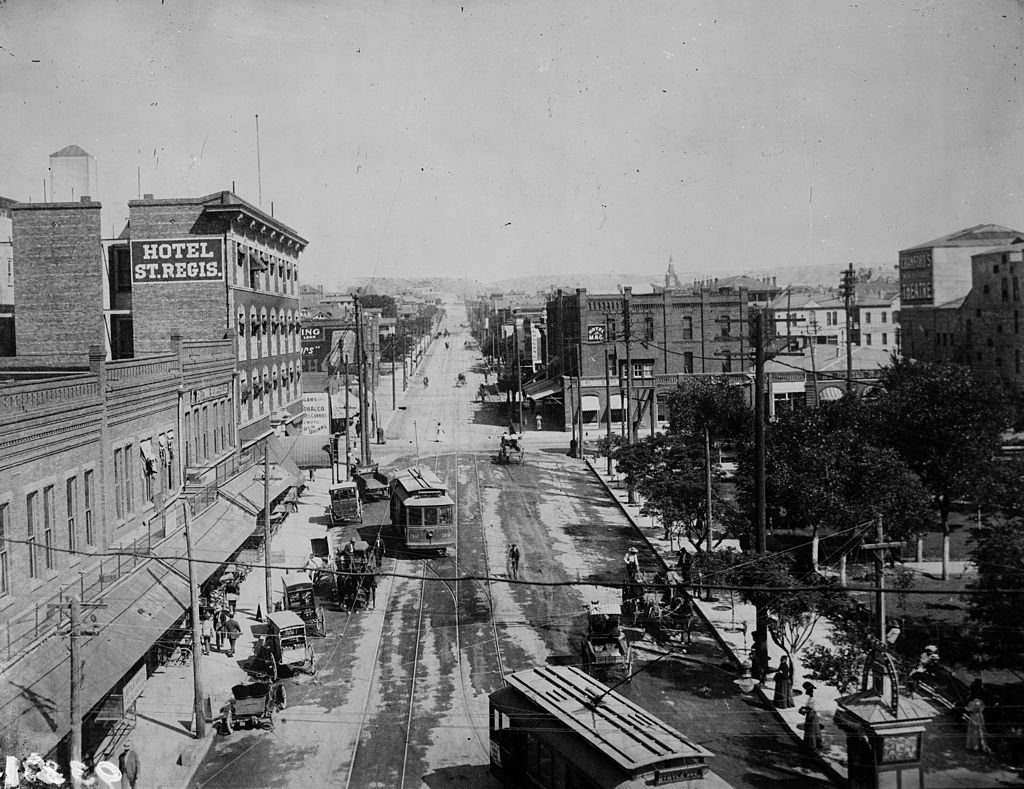
Trams travelling down Oregon Street, El Paso, Texas, circa 1913 | Source: Getty Images
Early Mule-drawn Streetcars
Given that Texas used to be part of Mexico and that El Paso is situated right along the borderline, it is actually not that difficult to imagine the connection between El Paso and its neighboring city, Juárez.
Public transportation between the two border cities went back a long way—in 1881, the first mule-drawn streetcars began their service in El Paso, with four different mule car companies operating in the Paso Del Norte Region. At the time, one of the favorite streetcar mules among locals was called Mandy. According to Sun Metro, there was a story involving Mandy and an impatient traveling salesman.
One story concerns a traveling salesman who was a passenger on Mandy’s trolley one hot afternoon when Mandy decided to stop for awhile and rest. The impatient passenger told the trolley operator he was in a hurry and asked why he wouldn't hit the mule and make her go.
"Hit Mandy?!" exclaimed the driver, "why if I was to lay a hand on that mule the town wouldn't stand for it." Presumably Mandy got her rest and the salesman eventually got to his destination.
Another interesting thing to note—at the time, each of those car companies built and maintain their own international bridges, charging tolls for foot and private vehicle traffic. However, even though they were privately owned, they were still subjected to government regulations from both the US and the Mexican sides.
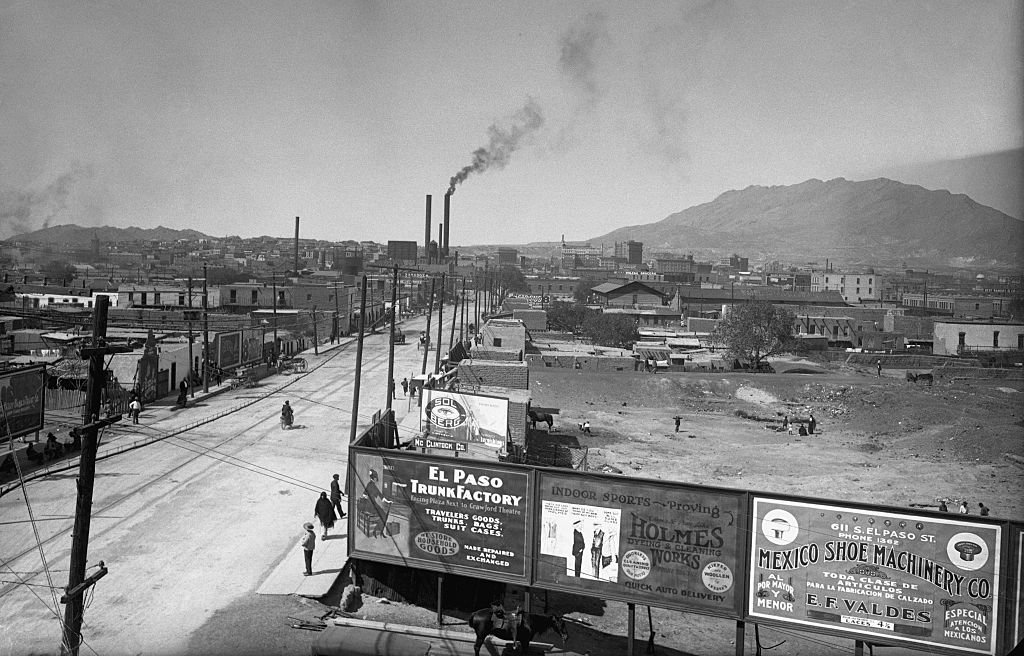
Looking north from the International Bridge showing the Mexican quarter, circa 1910s | Source: Getty Images
Electrified
Soon after that, streetcar mules were no longer seen across the border; instead, they were replaced by electric streetcars, with the first electric streetcar leaving for Juárez on January 11, 1902. Times were certainly changing, and in many ways progressing as well. Compared to mule-drawn streetcars, electric streetcars at the time were able to hold roughly four times as many passengers. Truly remarkable progress at the time.
What about the drivers? Interestingly enough, they also received specialized training on operating electric streetcars and received licenses for it. The "operators," as some would call them, slowly transitioned from mule-driving to operating an electric streetcar. Can you believe the shock they had when they found themselves in the control room for the first time? The times were definitely changing.
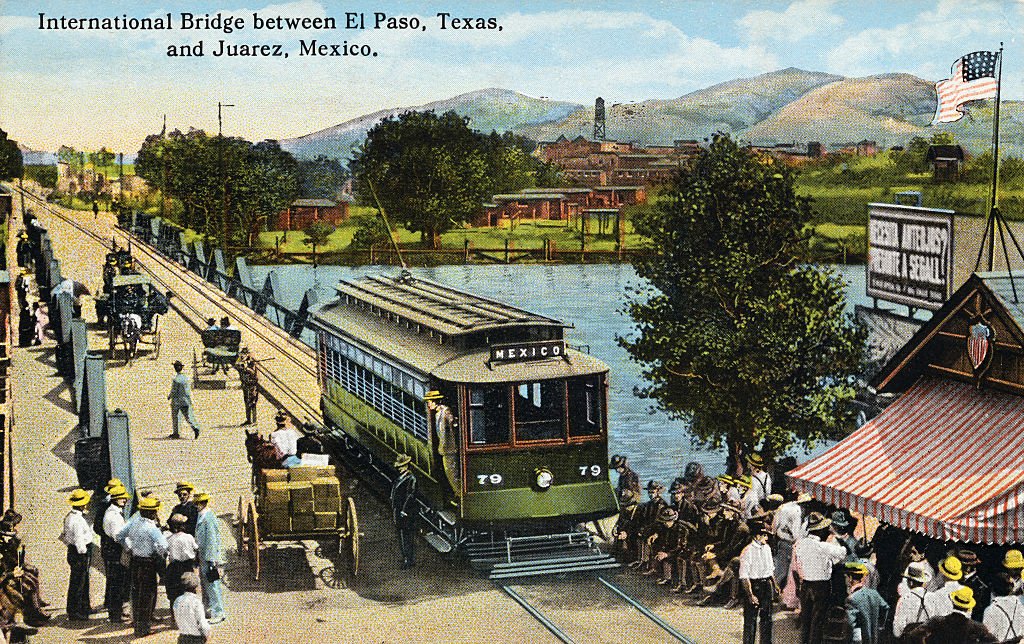
Early Postcard of International Bridge in El Paso, Texas | Source: Getty Images
Prohibition
If you studied history (or paid enough attention in history classes), you'd probably understand the impact Prohibition had on the country's development—and interestingly enough, the streetcar route between El Paso and Juárez also had its role during the Prohibition era.
For those who don't know what Prohibition is—long story short, it was a nationwide constitutional ban on the production, importation, transportation, and sale of alcoholic beverages from 1920 to 1933. Apart from being the source of inspiration for a bunch of mobster movies, it also changed the course of the country to a certain extent.
So how did the streetcars between El Paso and Juárez come into the picture? Well, since folks were not able to get a drink in the country, they had to go somewhere else—Mexico, for example. And El Paso, with its close proximity to Mexico, was in the perfect position for those who craved their drinks.
In 1920, the first year of Prohibition, it recorded a usage peak of 103 cars and 64 miles of track, serving 19 million passengers. Getting across the border just to get a drink … those were the days.
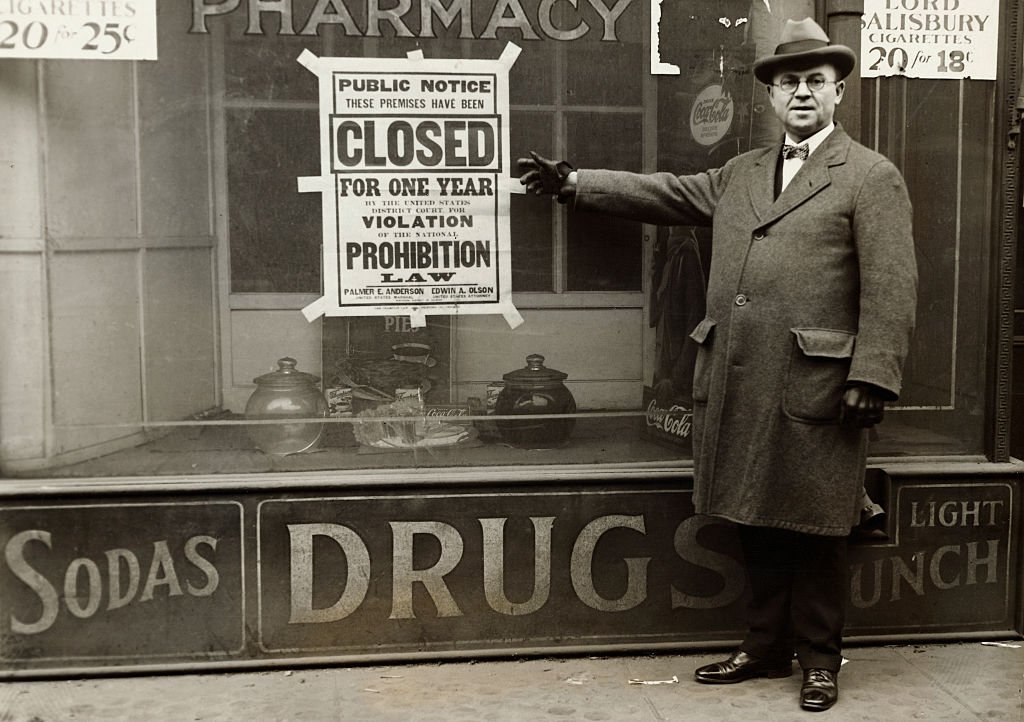
Man points to Prohibition sign, circa 1930s | Source: Getty Images
The Last of the Streetcars
Buses began replacing streetcars in El Paso in the 1940s due to a multitude of reasons. In 1940, the only streetcar lines that remained were Fort Bliss, Highland Park, and Juárez, with all the other lines replaced by buses.
That didn't last too long either, as three years later, in 1943, after the El Paso Electric Company sold its Transportation Division to American City Lines (a subsidiary of National City Lines), they terminated all the streetcar routes in El Paso … well, all except one, which is the El Paso-Juárez line.
Now you might be wondering—if they switched everything to buses, how did the streetcar route between El Paso and Juárez survive? As it turned out, the company in charge of the route could only run streetcars in Mexican territory, not buses, and therefore the "international" route managed to survive the changes.
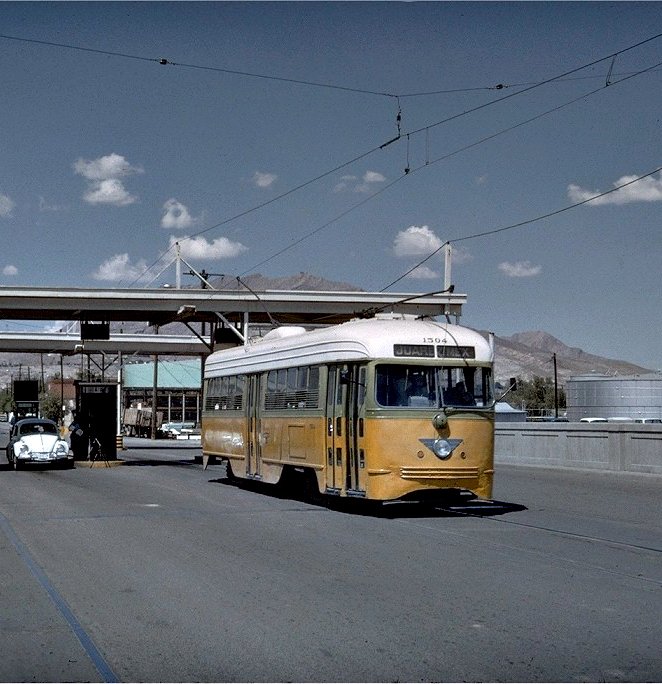
A streetcar on the former El Paso–Juárez streetcar line in the 1960s | Source: Getty Images
The End of the Line
The international streetcar route remained operative for the next few decades; there was a brief suspension of service into Juárez in 1967 due to some reconstruction work, but it resumed shortly after.
However, 1973 marked the end of the line when the former toll collectors on the Mexican side of the Santa Fe Bridge started a strike. El Paso City Lines, the company that operated the streetcars, decided to cease its toll operation due to cost concerns and made the bridge a free crossing to the U.S. side; the action angered the workers who then impounded a streetcar at the bridge by halting service on the single track.
Eventually, the mayors of Juárez and El Paso did meet and held a conversation over the "internationally-famous El Paso-Juárez trolley line, known as the only one serving two nations." However, despite the effort of all parties involved, the international route ceased its operation shortly after. With that also came the end of streetcar operations in El Paso.
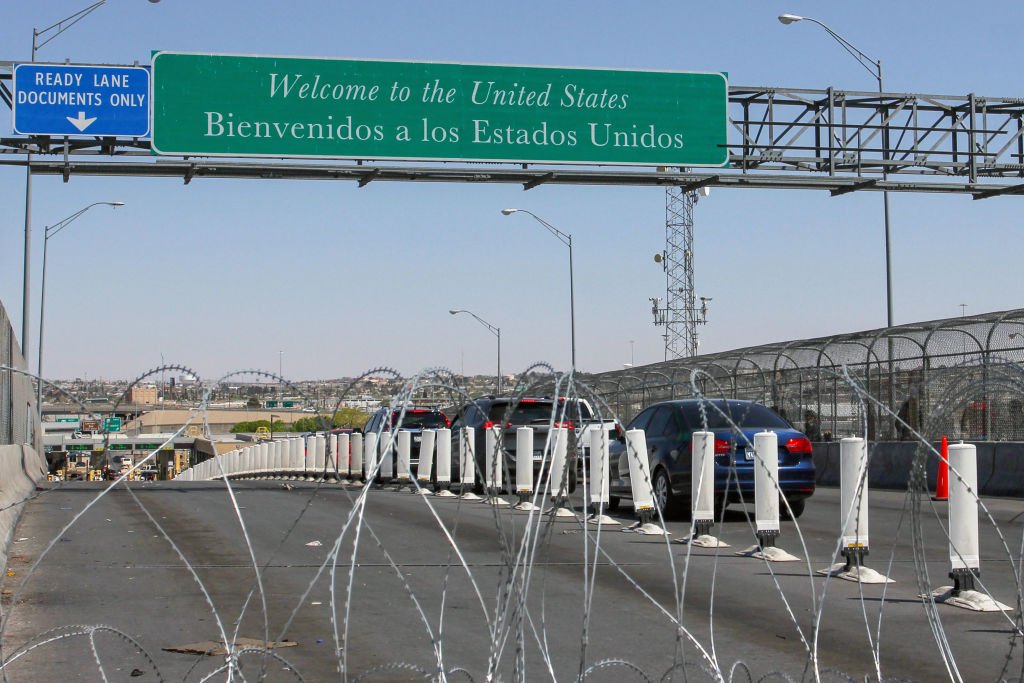
Border crossings at the Cordova-Americas international bridge, between El Paso, Texas, and Ciudad Juarez, Chihuahua state, in March 2019 | Source: Getty Images
Nowadays, what used to be a popular route has since been forgotten by most people; the old streetcars were being stripped and scrapped, with some lying in the dry Texan land rotting to their very core … a pity, isn't it? With the current situation, it might be difficult to see a true revival of the route, and with the new technology and means of transportation available, streetcars are no longer a necessity—they are simply not viable enough. A relic of the past, as some might say.
What do you think about this? Have you heard about this route before? Or perhaps you've tried taking one of them back in those days? Let us know! If you enjoyed reading this, don't forget to share it with your friends and family as well.
